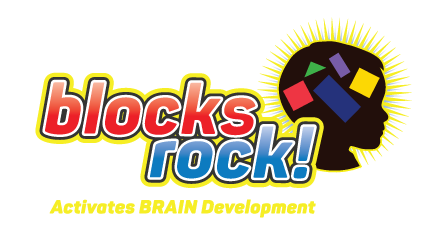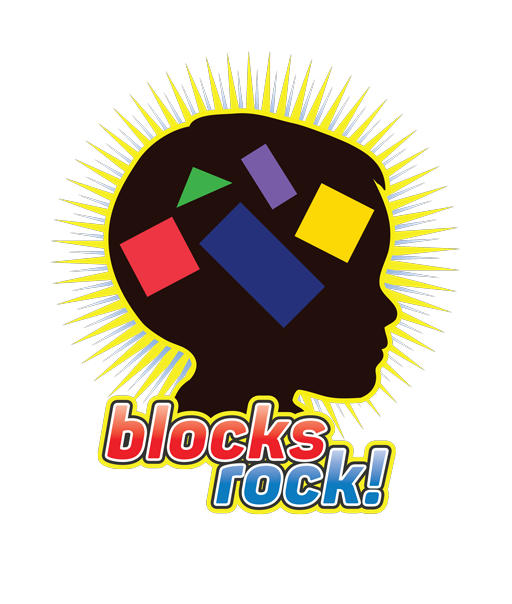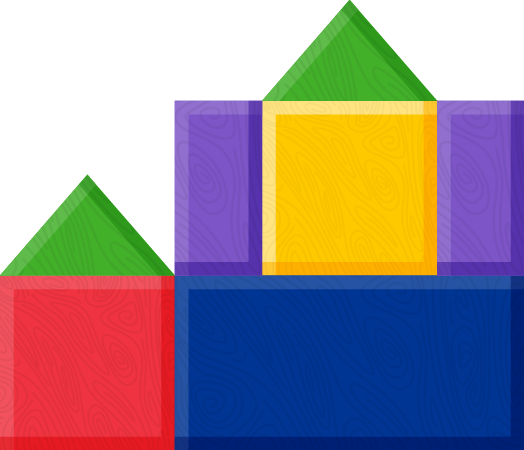At Blocks Rock!, we have talked about the importance of STEM (Science, Technology, Engineering, and Math) education for years. As a new term and type of education, STEAM, gains popularity, we want to help you understand what it is, why it’s important, and why you’ll be seeing more of it when we refer to the benefits of Blocks Rock!
What is STEAM Education?
There is only one letter of difference between STEM and STEAM, but it’s an important one. STEAM stands for Science, Technology, Engineering, the Arts, and Math.
According to Susan Riley, an Arts Integration Specialist, “STEAM is an educational approach to learning that uses Science, Technology, Engineering, the Arts, and Mathematics as access points for guiding student inquiry, dialogue, and critical thinking (elearning.tki.org.nz)”
When you look at it holistically, the National Center on Early Childhood Development Teaching and Learning (NCECTL) says that, “each of STEAM’s five subjects share a common approach and focus. They require gathering and using evidence to create knowledge or solve problems.”
Why is adding “the Arts” to STEM Important?
Society will continue to have a need for those with STEM skills, and building STEM skills remains a focus for childhood education. So, why is adding “Arts” to STEM education so important?
The first reason is that without Arts the critical component of creativity and innovation is lacking from the term STEM. Creative thinking skills are critical in each of the study areas of science, technology, engineering, and math. They allow children to come up with innovative ideas and find non-traditional solutions to problems.
And beyond creativity and innovation, making sure that the Arts are a key component to a child’s education provides far-reaching academic benefits.
Americans for the Arts found that “a student involved in the arts is four times more likely to be recognized for academic achievement.”
And Stratford Schools agrees, saying that, “a program that incorporates the arts into the curriculum has been proven to increase creativity, improve academic performance, increase motor skills, enhance visual learning, and boost higher decision-making skills.”
Here are some specific takeaways on how the interdisciplinary approach to STEAM helps students:
- Learn problem-solving
- Think innovatively and creatively
- Improve executive function: a set of skills that are critical for decision making, planning, memory, and more (NCECTL)
- Improve their logical thinking
- Understand mathematics and language
- In addition to improving these essential skills, research shows there is a positive relationship between early STEAM experiences and future success in school (NCECTL).
Blocks Rock! as a STEAM Education Tool
We’ve written many blogs on how Blocks Rock! can be used as a STEM tool, but why is it that we are calling it a STEAM tool now too?
First, Blocks Rock! has been proven to develop mental rotation and spatial reasoning. These are skills that are crucial not only for STEM education but also the Arts.
Also, while Blocks Rock! provides your kids with competitive structured block play, you can also find unique ways to build structures and create your own game with your set. You could encourage creativity and design by creating challenging new structures, like those in our free 3D app. Or, you can challenge your kids to come up with a new expansion or addition for the game by having them draw their own structures.
One of our Ambassadors, Lucy from Find the Little Mind, has come up with several new additions to the game, and you can check those ideas out at the bottom of our Home Learning Library.
If you’re looking for a tool that teaches skills critical for STEM learning and allows your kids the freedom to embrace the Arts, you can purchase your own set of Blocks Rock! through our website or on Amazon.


